The New Industrial Zone in Preah Sihanouk Province, Cambodia
By Hu Yifeng
[Cambodia] Sem Menghou
Preah Sihanouk Province in Cambodia has a unique coastal scenery, soft beaches and azure waters. If you travel 12 kilometers to the east from the beautiful port city of Sihanoukville, you will come across a new modern industrial zone teeming with cars and people.
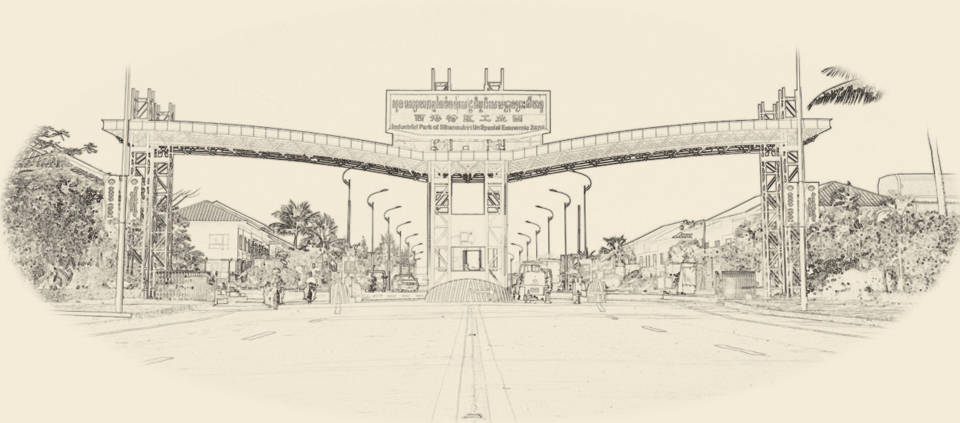
This is the Sihanoukville Special Economic Zone (SSEZ), dubbed the “Golden Rice Bowl” by the locals, a reference to the well-paid jobs to be found here. Thanks to the development of the SSEZ, the annual per-capita income of the province reached US$3,358 in 2018, the highest income in Cambodia. The Prime Minister of Cambodia, Hun Sen, gives a lot of importance to its development. He attended the ground-breaking ceremony and has visited the SSEZ several times since then.
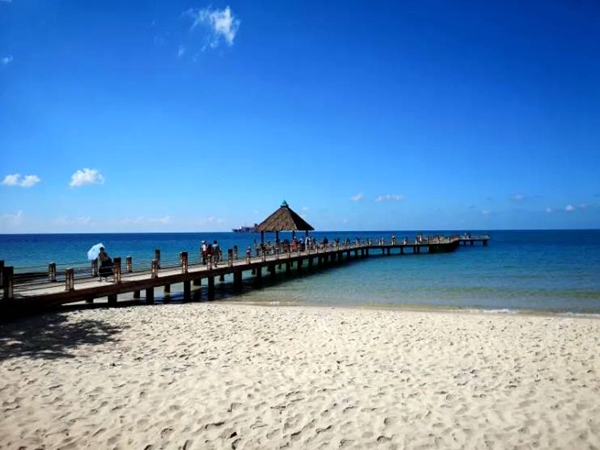
Sihanoukville’s coastal scenery
Creating a “Golden Rice Bowl” on a Barren Beach
The Sihanoukville Special Economic Zone was originally a barren beach without roads, water, electricity or the Internet. In the Modelang Township where it is located, the poverty rate was over 60 percent. The villagers mainly relied on planting crops and hunting for a living. Living at the mercy of nature, a family could earn only enough money to buy a cow within the course of a year.
Building a modern industrial zone on such a wasteland was no easy task, and the SSEZ builders had to overcome many unexpected problems. There was no electricity, so they used diesel generators for power; there was no water, so they dug wells; and since there were no houses, they built simple barracks. Although it rains for half a year in Cambodia, construction of the SSEZ never stopped.
There were more difficulties during the construction. If they built a wall, it would collapse the next day. Inexplicably, construction equipment would be found broken.
There were concerns whether the mishaps were due to a lax project management or if they were deliberate acts of vandalism.
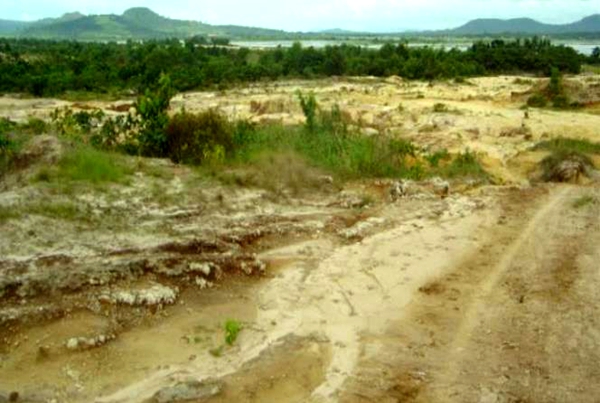
The site of the Sihanoukville Special Economic Zone before construction
Eventually, the SSEZ builders discovered the reason. The problems were caused by villagers who were worried that once the land was developed to build the SSEZ, there would be no free grazing ground left for their flocks.
So the construction team went to visit them to allay their concerns. They assured the villagers that they would be the first to be recommended for work in the companies that would settle in the SSEZ. Also, they would be provided skills training.
“We assure you, you can earn the money to buy a cow in three months,” they promised.
In this way, the SSEZ finally came up on this barren beach after overcoming the odds and the project team kept their commitment to the villagers.
As a high-skilled worker who has benefited from the training programs offered by the SSEZ, Chanthou Thom’s story is rather impressive. In the past, he worked on construction sites, took part-time jobs, or went fishing on the sea. But in most cases, he was unemployed with no income.
But after joining the Hodo International Garment Co., Ltd. as an assembly line worker in the SSEZ, Chanthou Thom’s income has grown stable. He has become an excellent production line leader by researching and studying assembly line flow process. Based on his research, he has also formulated his “Chanthou Thom work method” to facilitate the work. The method is described on the bulletin board of the workshop so that other workers can learn from it.
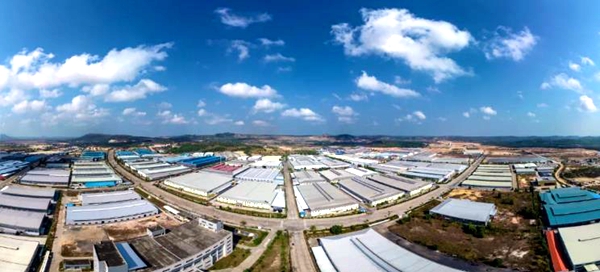
The Sihanoukville Special Economic Zone today
Working in the SSEZ was a turning point for him, and a new starting point in his life, Chanthou Thom said proudly. Currently, his wife and younger brother are also working in the SSEZ. The family has a stable income and has bought a van. Things are getting better for them.
Many people like Chanthou Thom, who were earlier living at the mercy of nature, have been transformed into industrial workers with steady incomes, thanks to their jobs in the SSEZ. Their lives are changed and they are far happier. They have won the “Golden Rice Bowl”.
Joining Hands to Develop Industries
The Sihanoukville Special Economic Zone not only provides a “Golden Rice Bowl” for the local people, but has also created a clear and pragmatic development blueprint in which its industrial development is deeply integrated with local economic and social development.
The SSEZ works with the local government to provide a full range of services to businesses. Its “one-stop” window facilitates the development of enterprises; the legal service center provides professional legal consultation for them; and the labor market assists them in recruiting workers.
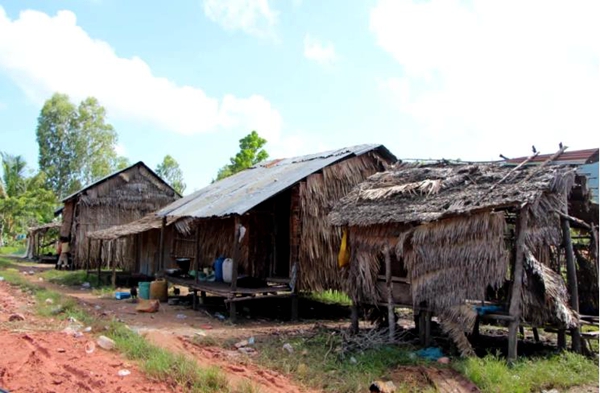
A comparison of the villages around the Sihanoukville Special Economic Zone in the past and at present
With the entry of various industries, like textiles, garments, luggage and leather goods, the industrial chain has gradually extended and the supporting ecosystem improved. The SSEZ has become a vibrant new industrial area.
One of the earliest companies to settle in the SSEZ is Horseware (Cambodia) Co., Ltd., a globally renowned Irish manufacturer mainly producing horseware and riding apparel. Since it started operation in the SSEZ, its production and sales have been booming. The official in charge said the SSEZ is advancing with each passing day, with its production and business environment improving and its popularity growing. This has made the European company determined to take root here.
Colia Leather (Cambodia) Co., Ltd. from China is a modern leather goods company. Its scale doubled in the SSEZ in just over a year and the company has attracted upstream and downstream supporting enterprises such as sponges, wood products and cartons manufacturers to the SSEZ, forming an industrial chain of household goods.
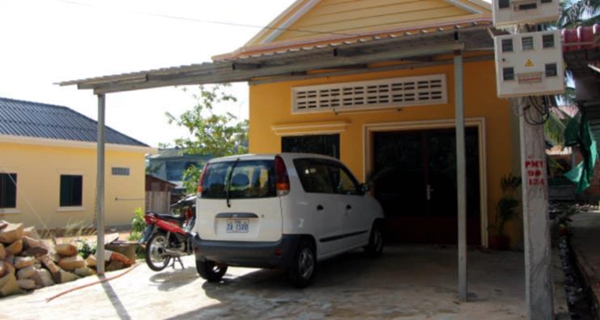
A comparison of the villages around the Sihanoukville Special Economic Zone in the past and at present
Today, the builders are working on an upgraded version, SSEZ 2.0, to attract leading enterprises and key projects, bring in upstream and downstream businesses, and transform the special economic zone from an enterprise investment destination to an industrial chain investment hub.
Workers in the New Industrial Zone
Sok Theara lives in Bet trang. A few years ago, she joined an enterprise in the SSEZ as a translator. During the probationary period, she earned more than US$300 a month. The job changed her life and to show her appreciation, she now goes by a Chinese name, Chen Xiuli.
Chen’s wooden house has also changed. It is now a brick house with various pieces of furniture and appliances. Her family is grateful to the SSEZ for changing their lives.
Sokhem, who studied electrical maintenance, had originally opened his repair shop in downtown Sihanoukville. When the SSEZ came up, he sensed business opportunities and moved his shop to a village right next to the SSEZ.
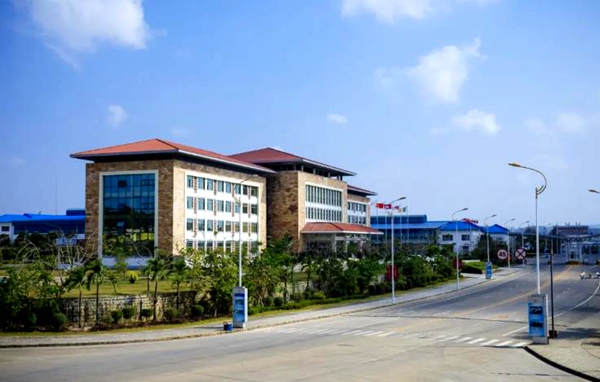
The Administrative Service Center at the SSEZ
As the SSEZ continues to grow, his business is also getting increasingly prosperous, bringing him a monthly income of nearly US$500. A happy Sokhem feels especially fortunate with the decision he took back then. And he is grateful to the SSEZ. “Thanks to it, my business is booming,” he said. “The SSEZ brings me so much business.”
The Governor of Preah Sihanouk Province once visited the neighboring villages incognito. The villagers were happy to tell him that with the completion of the SSEZ, everyone had a good job and their income had increased. Order in the village had also greatly improved. The Governor remarked, “The SSEZ plays a very important role in promoting the economy of Cambodia, especially the economy of Preah Sihanouk Province. Its development has greatly improved the living standards of the people living in the neighboring villages.”
Today, the general feeling of the people is that they can learn in the SSEZ, earn in the SSEZ, and lead a happy life there.
Come to the SSEZ if Yo u Have Difficulties
There is a saying in the villages around the Sihanoukville Special Economic Zone, “If you have difficulties, come to the SSEZ.” The SSEZ has formed deep ties with the locals in their daily lives.
In the early days when the SSEZ was being built, the young employees of the SSEZ Company often taught at the local Modelang Primary School during their spare time as a labor of love. The school building was dilapidated and the school couldn’t afford electricity. When the SSEZ Company learned about the school’s plight, it paid the electricity bills to get the power supply restored and improve the teaching environment.
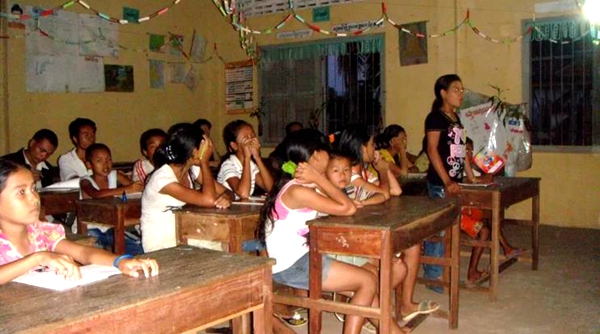
A classroom in Modelang Primary School before makeover
In Cambodia, the government pays students’ tuition and book fees in public schools from the first grade to the twelfth grade. Parents have to pay only about US$100 per year. But some poor families are unable to pay even that and their children are forced to drop out of school. To address this, the SSEZ Company launched a charitable assistance and support project. Its employees sponsored students from poor families who showed good academic performance on a one-on-one basis. Today, there are no students dropping out of school for financial reasons.
In cooperation with the government of Jiangsu, a coastal province in China, the SSEZ Company also helped to build audio-visual classrooms, teaching buildings, a basketball court, a water supply corner and a reading room for the school. In addition, it donated sports equipment and new uniforms. The headmaster of the school said joyfully, “Now our school is the most advanced here in teaching equipment.”
In order to help local people become skilled industrial workers, the SSEZ has developed vocational skills training, offering English, Chinese, management, trade, accounting, computer, logistics and other subjects for more than 40,000 trainees.
On one of his visits to the SSEZ, Prime Minister Hun Sen once asked the workers about their wages. A worker replied, “I can get US$450 a month because I can speak Chinese!” The Prime Minister then promptly asked him, “Do you know what wo ai ni means?” “I love you,” the man exclaimed.
Every year, the SSEZ donates money to the Cambodian Red Cross Society and provides rice and drinking water to victims during disasters. Since 2015, the SSEZ Company has been working with China’s foreign assistance medical team to bring them over to Sihanouk Province to provide free medical assistance. The team has visited there five times, treating nearly 8,000 local patients.
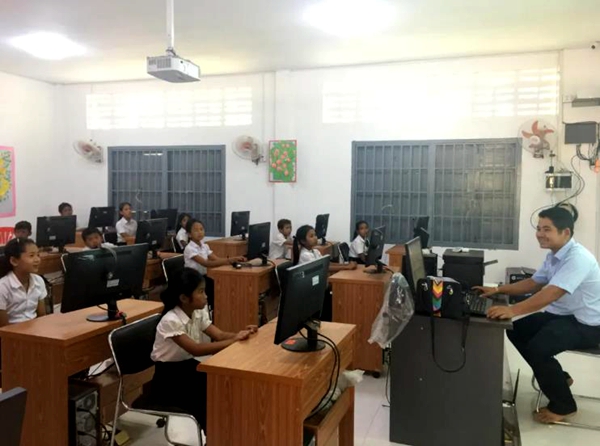
A classroom in Modelang Primary School today
Today, as you enter the SSEZ, you can see neatly planned factory buildings on both sides of the industrial road. The busy shops outside the SSEZ, the new village houses and the cars parked in front of them present an arresting sight. You can see people talking and laughing, their faces reflecting happiness and satisfaction.
Their dream of leading a good life has come true here and together with the SSEZ, they will move toward a brighter future.
FOR MORE
Project Overview
The Sihanoukville Special Economic Zone, covering an area of 11.13 square kilometers, is located in Prey Nob County, Preah Sihanouk Province, Cambodia and lies adjacent to Sihanoukville, the largest port in the country. It is jointly operated by Chinese conglomerate Hodo Group and Cambodia International Investment Development Group.
Since 2013, the development of the SSEZ has entered the fast lane and the number of enterprises in it has increased significantly. By the end of 2018, 153 companies from countries and regions such as China, Europe, the United States and South Asia had settled in. They include 139 industrial enterprises, mainly related to textiles and garments, luggage, leather goods, machinery, electronics, wood flooring and other industries. The total amount of investment in the zone has reached US$657 million, and the total output value is about US$1 billion. The SSEZ provides around 22,000 jobs.


